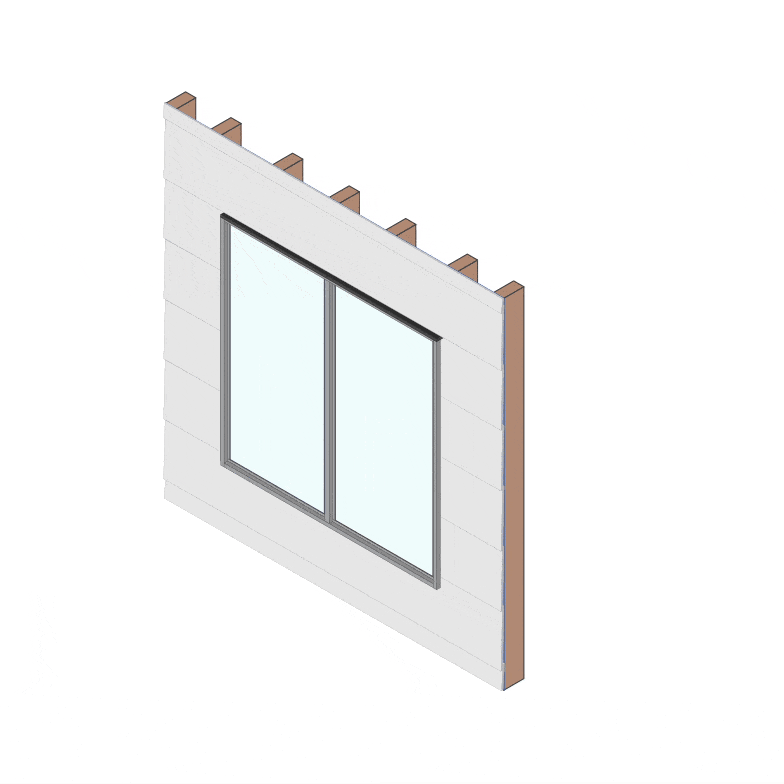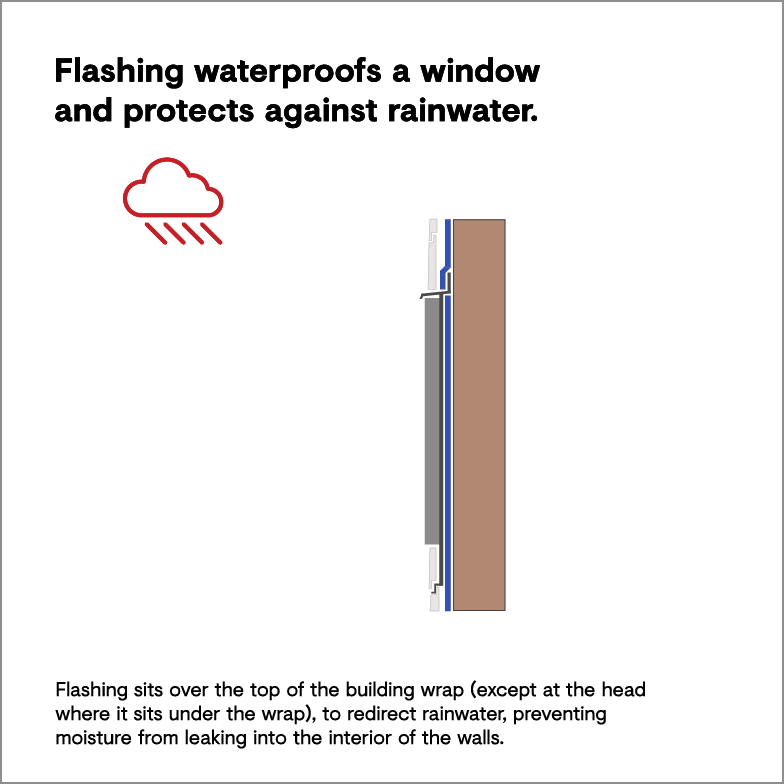
Locally made
A GUIDE TO COMPLIANT WINDOWS
Wherever you’re building in Australia, window flashing is now a must.
Window flashing is a small feature that makes a big impact, not just by keeping water out and helping you remain compliant, but also by helping to improve your building’s energy efficiency. Flashing helps seal up gaps, which means less heat loss in winter and cooler air staying in during summer. It’s affordable, easy to install and saves you money in more ways than one.
This guide on window flashing for builders highlights:
Did you know: The Victorian Building Authority and private inspectors are cracking down on missing window flashing, driven by confusion around the rules and high rates of non-compliance
Although there are many different types of flashing, they all achieve the same purpose. Flashing is designed to waterproof a window and protect against rainwater damaging the internal building fabrics of your home.
In most cases across the east coast of Australia, homes consist of a timber frame with cladding on the outside—whether brick veneer, weatherboard, or other materials—with a waterproof building wrap between the timber and the cladding.

Flashing works with the building wrap to redirect rainwater, preventing moisture from leaking into the interior of the walls.

With that in mind, flashing is important for three key reasons:
Did you know: At A&L, we offer a wide range of flashing options that can be tailored to your unique requirement, and conveniently supplied as part of your window order. It’s the easy way to take the hassle out of window flashing and protect yourself against the pitfalls of non-compliance!
Door sill flashing is just as important as window flashing.
While flashing at the base of doors has been a requirement since the National Construction Code (NCC) 2019, it’s something that can still be overlooked. The purpose is the same as with windows: to protect against water ingress and ensure long-term durability.
With the proposed NCC 2022 updates, this requirement is being clarified even further. These updates include more detailed guidance, such as explanatory notes and section drawings that show how to properly install flashing—specifically using an Alcor-type semi-rigid material—at the sill of external doors.
This added detail is designed to reduce confusion and help builders get the installation right the first time, ensuring compliance and protecting homes from moisture-related issues.
Wherever you are in Australia, every window in a home with masonry veneer or lightweight construction cladding requires some type of flashing. This is required under the newly updated National Construction Code, as of February 1st, 2019.
Here’s where some of the confusion comes in.
While flashing was mentioned in the Code previously, it was often using non-definite terms: phrases like “flashing is necessary where required”. Now, the Code offers the following prescriptive guidelines*:
As outlined by the Code in Clause 3.3.5.8, flashings must be applied to the top and bottom (or head and sill) of an opening. Additionally:
Clause 3.5.4.6 of the newly updated Code stipulates that flashing must be provided to the top, sides and bottom (head, jambs and sill) of an opening. Additionally:
Joins in the flashing must:
There are multiple outcomes for failing to flash a window.
A lack of flashing can create future headaches.
Without flashing, rainwater can slowly infiltrate the building envelope, leading to issues like cracked plaster, swollen timber, damaged flooring, or mould. These kinds of problems can take time to appear, but when they do, they often mean costly repairs and a return to site.
Taking the time to install flashing correctly helps ensure the job holds up over time and reflects the quality of your work.
Missing flashing can be flagged for non-compliance
Independent inspectors and state building authorities are paying closer attention, and if flashing is missing, it’s likely to be flagged.
For builders, that can mean delays, extra site visits and added costs. For homeowners, it can cause frustrating hold-ups. A small detail like flashing can make a big difference in keeping things on track and avoiding unnecessary setbacks.
Compromised seals can affect energy efficiency performance
Poor sealing around windows can allow unwanted drafts and thermal bridging, meaning the home may lose valuable conditioned air in summer or winter. This not only impacts comfort but can also drive up energy use.
As a builder, imagine you’ve just finished building 10 lightweight or weatherboard homes. The windows are plastered in and the occupants are ready to move into each property.
Before moving in, one of the occupants contacts an independent building inspector to check the house. The inspector’s services likely cost a few thousand dollars, so they are motivated to complete their due diligence and provide a thorough report.
Walking through the home, the inspector recognises that there is no flashing on the windows. Unlike non-compliance with energy-ratings—which requires several tests and detailed information to identify—a lack of flashing is immediately visible for a building inspector.
As a result of the non-compliance, the certificate of occupancy is delayed until all windows are flashed.
Unfortunately, that means ripping off all the cladding and plaster work, installing flashing, re-plastering, repainting the plaster, and reapplying the cladding. For every single window in every home you’ve built.
It’s simple: order your window products with flashing included and ensure the flashing is installed correctly.
If you have the right materials on site, affixing flashing to a window takes literally seconds. And it can save you from lost time and money—and the severe inconvenience of re-doing work—caused by non-compliance.
With building authorities like the VBA conducting proactive inspections and shining a spotlight on window flashing, the likelihood of being identified for non-compliance is growing.
While the revised National Construction Code provides clear guidelines for window flashing, we’re here to make the process as simple and convenient as possible.
To learn more about your options, get in touch with the team today!
*This article has been developed to provide general guidance, awareness and education. It should not be viewed as a definitive guide and should be read in conjunction with the requirements of the National Construction Code (www.abcb.gov.au). While every effort has been made to ensure the information is accurate, A&L expressly disclaims all and any liability to any person for anything done in reliance on this publication. No responsibility is accepted by A&L for any mistakes, errors, or omissions in this content.